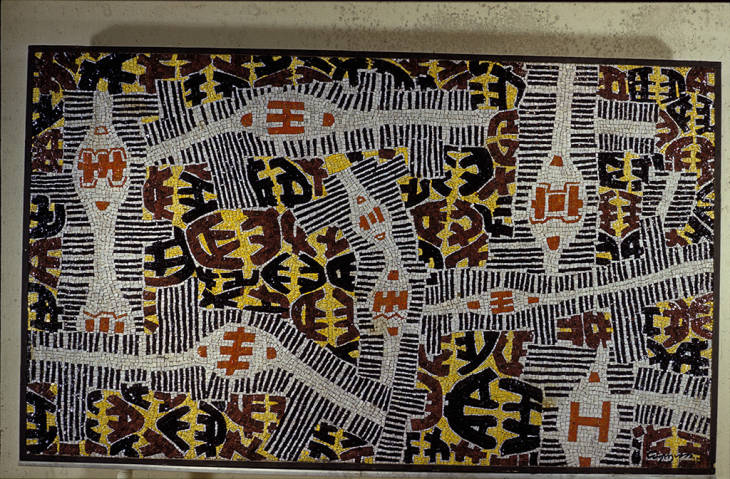While browsing through the archives of the American Craft Council’s site, I came across the Press Release of an exhibition titled : Modern Mosaics of Ravenna, March 30 - May 14, 1961.
Below, sharing part of the Press Release :
“In the city of Ravenna, known throughout the world for its great mosaics of the early Christian era, a group of business organizations commissioned these works in an effort to contribute to the rebirth of the mosaic art. The exhibition was organized by Professor Giuseppe Bovini of Ravenna, and is circulated by The American Federation of Arts. It is traveling in the United States under the auspices of the Italian Cultural Institute.
This ancient means of wall decoration consists chiefly of hundreds of very small cubes, called tessere, made of a vitreous paste consisting of a mixture of lead silicates, calcium and potassium, held together by plaster. Enamels, marbles, semi-precious stones, ceramics, etc., are also used. Mosaic art is based essentially on forms and colors which have been simplified to the utmost, and its most typical characteristic is a powerful, chromatic impact. During the fifteenth century and subsequent decades, however, the art of the mosaic was patterned after painting and became an imitative process resulting in the loss of its particular clarity and force.
In his introduction to the catalog for the exhibition, Professor Bovini states, "The art of the mosaic ... is still capable of recapturing its original values. And it can still perform a highly decorative and aesthetic function, if it will but accept and adhere to the nature of the material employed and avoid any tendency towards chromatic fusion. In other words, simplification of form and color must be defended at all costs. The mosaic is without any doubt one of the most vital techniques available for decoration. "
below, images of the mosaics shown at this past exhibition.
source : from the Library and Archives Digital Collection of the Craft Council.



